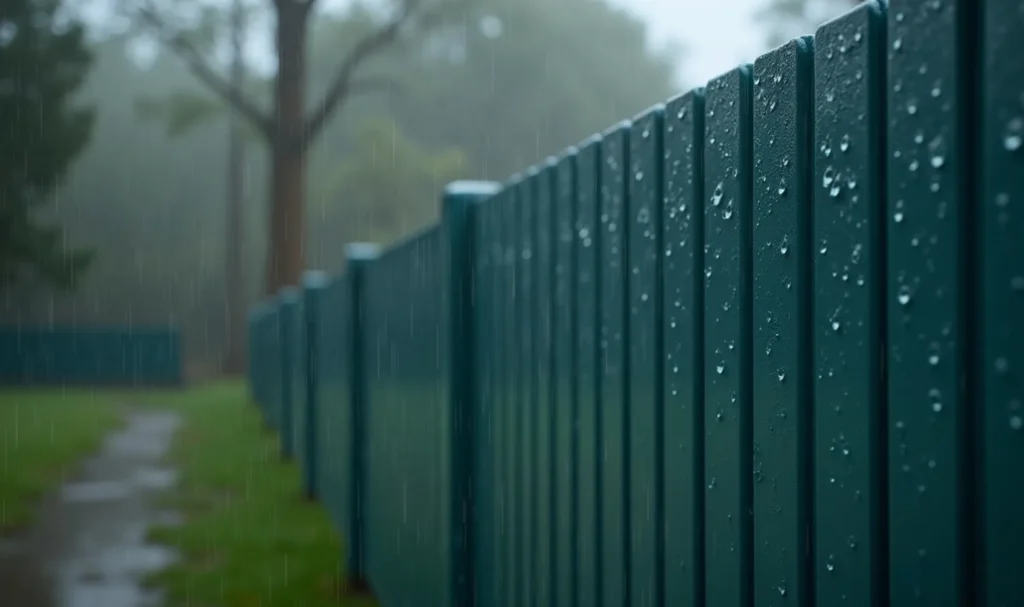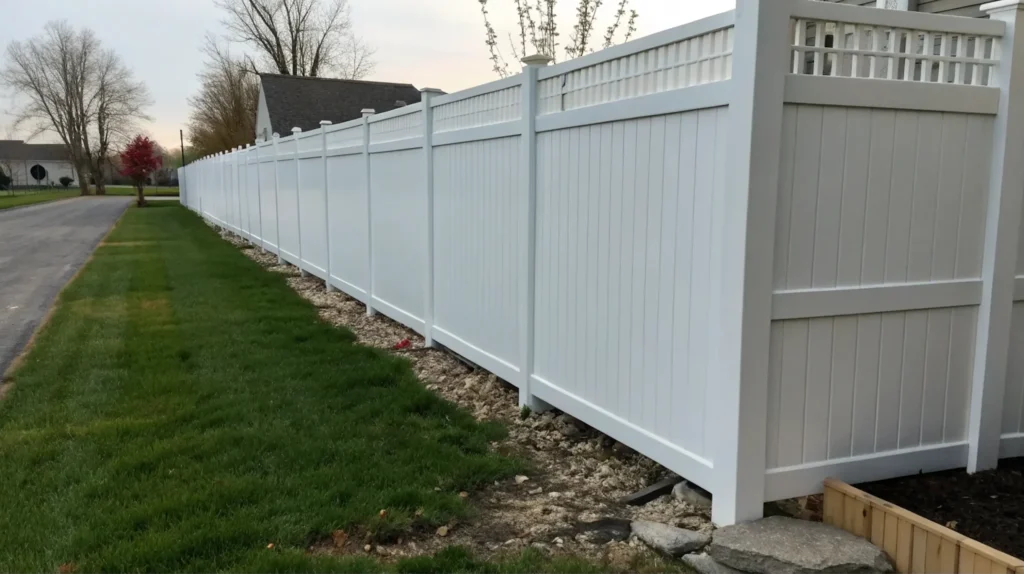Many homeowners have questions about modifying their vinyl fence, including whether it’s possible to drill into it. The short answer is yes, you can drill into a vinyl fence, but it’s crucial to do it correctly to avoid damage and maintain its integrity. This article provides a comprehensive guide on how to drill into a vinyl fence, covering everything from necessary tools to safety precautions.
Why You Might Need to Drill Into a Vinyl Fence
There are several reasons why you might need to drill into your vinyl fence:
1. Installing Decorative Elements
Adding decorative items like lights, trellises, or planters often requires drilling holes for mounting hardware.
2. Attaching Accessories
You might want to attach accessories such as mailboxes, hose reels, or other yard equipment, necessitating the creation of screw holes.
3. Running Wires or Cables
If you plan to run low-voltage lighting or other wiring along your fence, drilling small holes might be necessary to pass cables through posts or panels.
4. Repairing Damage
In some cases, drilling might be required when repairing minor damage or reinforcing loose connections.
Tools and Materials Needed for Drilling Into a Vinyl Fence
Before you start, gather the necessary tools and materials:
1. Drill
A standard electric or cordless drill is sufficient for drilling into a vinyl fence.
2. Drill Bits
Use high-speed steel (HSS) or multi-material drill bits. Start with a small bit and gradually increase the size as needed.
3. Measuring Tools
A ruler or measuring tape is crucial for marking the drill point accurately.
4. Pencil or Marker
Use a pencil or marker to indicate where you intend to drill.
5. Safety Glasses
Protect your eyes from flying debris by wearing safety glasses.
6. Work Gloves
Protect your hands by wearing work gloves for a secure grip and to avoid cuts.
7. Painter's Tape
Use painter's tape to protect the vinyl surface from scratches and to prevent drill slippage.
8. Deburring Tool or Sandpaper
A deburring tool or fine-grit sandpaper can be used to smooth rough edges after drilling.
Step-by-Step Guide to Drilling into a Vinyl Fence
Follow these steps carefully to ensure a clean and successful drilling process:
1. Plan and Measure
Decide exactly where you need to drill. Use your measuring tools to mark the drilling point accurately with a pencil or marker.
2. Apply Painter’s Tape
Place a piece of painter’s tape over the marked area. This will protect the vinyl surface from scratches and help prevent the drill bit from slipping.
3. Start with a Pilot Hole
Begin with a small drill bit to create a pilot hole. This will guide the larger bit and prevent cracking.
4. Increase Drill Bit Size
Gradually increase the drill bit size to achieve the desired diameter. This will help reduce stress on the vinyl and prevent damage.
5. Drill Slowly and Steadily
Use a slow and steady drilling motion. Applying too much pressure or speed can cause the vinyl to crack or splinter.
6. Check Your Progress
Frequently check the hole to make sure you are drilling straight and not going too deep. Ensure the hole is the correct size and shape before you continue.
7. Deburr and Clean
After drilling, use a deburring tool or sandpaper to smooth any rough edges. Clean the area with a soft cloth.
Best Practices When Drilling into a Vinyl Fence
Keep the following practices in mind for best results:
1. Use the Right Drill Bit
Ensure that the drill bit is sharp and suitable for vinyl material. Dull bits can cause cracking and tear-out. A new sharp bit will give a cleaner cut.
2. Use Low Speed
Drill at a low speed to prevent overheating and melting of the vinyl. High speeds can cause issues with the vinyl material.
3. Drill from the Outside
If you need to make a through hole, start from the outside of the fence panel or post, which is the visible side.
4. Avoid Over-tightening Screws
When attaching accessories, don't over-tighten screws, as this can damage the vinyl. Tighten the screw until it is secure but no more than that. Over tightening will cause the vinyl to crack.
5. Consider Professional Help
If you are unsure about your skills or have a complex project, consider consulting a fence professional.
Potential Risks of Drilling Into a Vinyl Fence
While drilling is generally safe, here are potential risks to be aware of:
1. Cracking or Splintering
Drilling too fast or using dull bits can cause the vinyl to crack or splinter.
2. Structural Damage
Improper drilling can weaken the fence’s structure if too many or too large holes are made in the panel or posts. It is important to reinforce these areas or avoid them if possible.
3. Voiding Warranty
Modifying your fence by drilling holes may void the manufacturer's warranty, so be sure to check your warranty’s terms and conditions.
4. Unsightly Holes
Drilling incorrectly can lead to unsightly holes if not done correctly.
Comparison Chart: Drilling Into Different Fence Materials
It's useful to see how drilling might differ across various fence materials. Here's a comparison chart:
| Feature | Vinyl Fence | Wood Fence | Metal Fence | Composite Fence |
|---|---|---|---|---|
| Drilling Ease | Moderate | Easy | Difficult | Moderate |
| Splintering Risk | Low (if done correctly) | Moderate | Low | Low |
| Cracking Risk | Moderate | Low | Low | Low |
| Tool Requirement | Standard drill with HSS bit | Standard drill with wood bit | Drill with metal bit, drill press | Standard drill with multi-material bit |
| Durability Post-Drill | Good (if proper technique used) | Moderate (may need sealing) | Good | Good |
Highlight: Remember that careful planning and proper technique can minimize risks when drilling into your vinyl fence.
Conclusion
Drilling into a vinyl fence is feasible as long as you proceed carefully. By using the right tools, following the step-by-step guide, and being aware of the potential risks, you can safely modify your fence to meet your needs. Proper planning and execution will ensure your fence's beauty and structural integrity remain intact.
Q&A: Frequently Asked Questions
Q: What type of drill bit should I use for a vinyl fence?
A: High-speed steel (HSS) or multi-material drill bits work well for vinyl fences. A sharp bit is crucial for a clean cut.
Q: Can I use a standard power drill on a vinyl fence?
A: Yes, a standard electric or cordless drill can be used, but use a low speed to avoid damaging the vinyl.
Q: How can I prevent cracking when drilling into vinyl?
A: Use a sharp bit, start with a pilot hole, gradually increase the drill bit size, and apply slow and steady pressure.
Q: Is it better to drill from the outside or inside of the fence?
A: Drill from the outside of the fence (the visible side) for a cleaner finish.
Q: Will drilling into my vinyl fence void its warranty?
A: It depends on the warranty terms. Check with the manufacturer or your retailer to understand specific conditions.
Q: Should I use a lubricant when drilling into vinyl?
A: A lubricant is not usually needed, but if you encounter resistance, a little WD-40 can help ease drilling.



